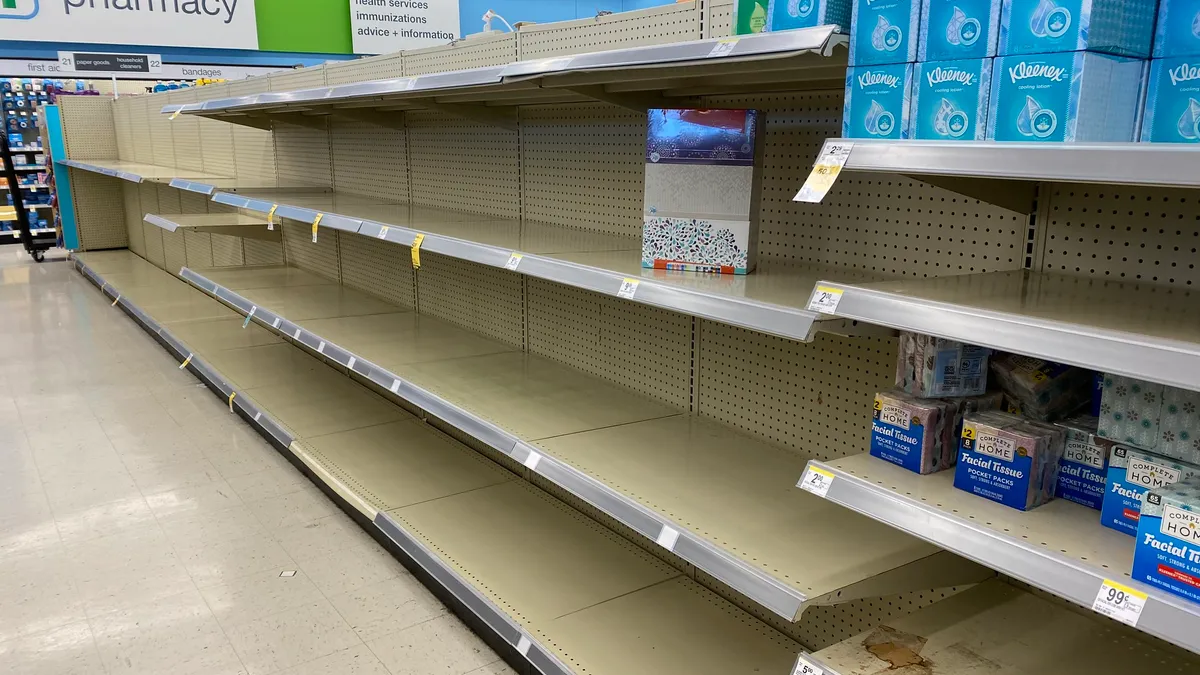Dive Brief:
- Fifty-nine percent of U.S. companies say they would be unable to continue shipments for more than two weeks after a production stoppage, according to a survey of 1,300 international firms from RapidRatings released Monday. Among all the firms surveyed globally, that figure improved to 47%.
- The primary culprit is a cross-industry reliance on just-in-time (JIT) manufacturing, RapidRatings CEO James Gellert told Supply Chain Dive in an interview. Secondly, companies that don't have the resources and/or redundancies in place to have global warehousing and production networks are at a significant disadvantage, he said.
- For companies, the key is not only surviving the COVID-19 pandemic, Gellert said, but preparing for a "double wave" of significant demand shifts once production resumes, as suppliers and customers may have shifted their business elsewhere to cope with disruption.
Dive Insight:
Given the risks of JIT manufacturing and carrying low inventory levels, RapidRatings did find that 64% of companies have a pandemic response plan and 68% have a committee or working group in place for continuity planning. However, some have been overwhelmed by the scale of the task at hand.
"I think this magnitude has swamped many companies," Gellert said. "There's a lot of business continuity planning that never fully expected this ... A lot of business continuity is about how you shift to an offsite location. If there's a flood or if there's a power outage or if servers go down, a lot of business continuity is at that level, whereas [COVID-19] is obviously much more systemic than that."
Currently, reports from China show slowing COVID-19 infection rates, factories beginning to ramp back up and ports beginning to resume normal operations. However, the ripple effect of shuttered supply lines and the virus' global spread have now caused a chain of shut downs amid quarantine measures in Europe, India, the U.S. and elsewhere.
The companies that manage to survive the current level of disruption may be able to sustain themselves afterward, however, that is not a guarantee, Gellert said. "And for supply chain risk managers around the world, the real question is going to be: How many of those companies have been hurt in a terminal way, to where the change demand structure for their products over the next couple of years will actually cause them to fail, even if they've survived this short term shock?"
The key to surviving this "double wave" of disruption is frequent, consistent and transparent communication with suppliers and customers, Gellert said. The adoption of cloud-based technologies, data collection and analysis tools, and end-to-end supply chain visibility platforms have helped to grow a culture of data-sharing in the supply chain industry, he believes, but primarily among the firms that have worked to get ahead of the curve and adopt them.
Otherwise, multiple studies have found the majority procurement functions remain reliant on static excel spreadsheets and levels of digital transformation across supply chains remains relatively low.
Gellert says whether this has been a company's historical practice, shippers should start opening and maintaining these lines of communications about their actual position as a means of building trust, and encouraging similar responses from customers, which could give a company vital intelligence on upcoming demand trends.
"And when I say 'actual position,' I mean their actual business position, their resiliency, their financial health, their access to capital, how quickly they're coming back online — things like that," he said.















